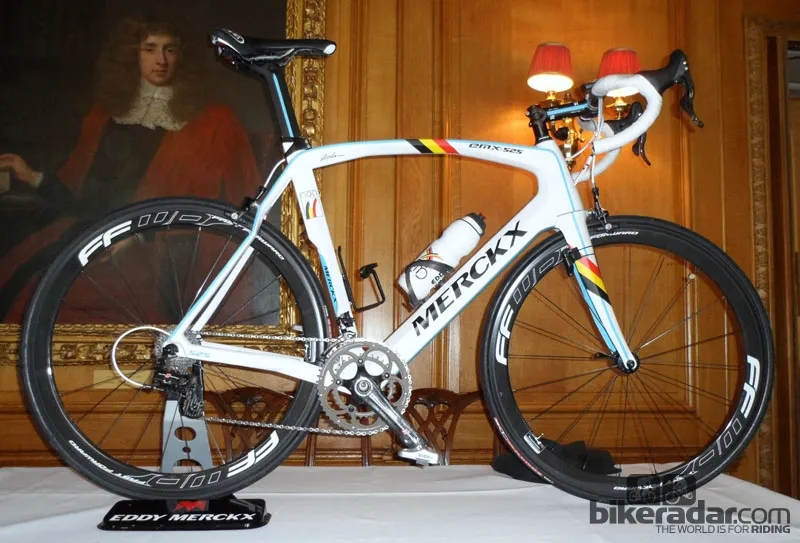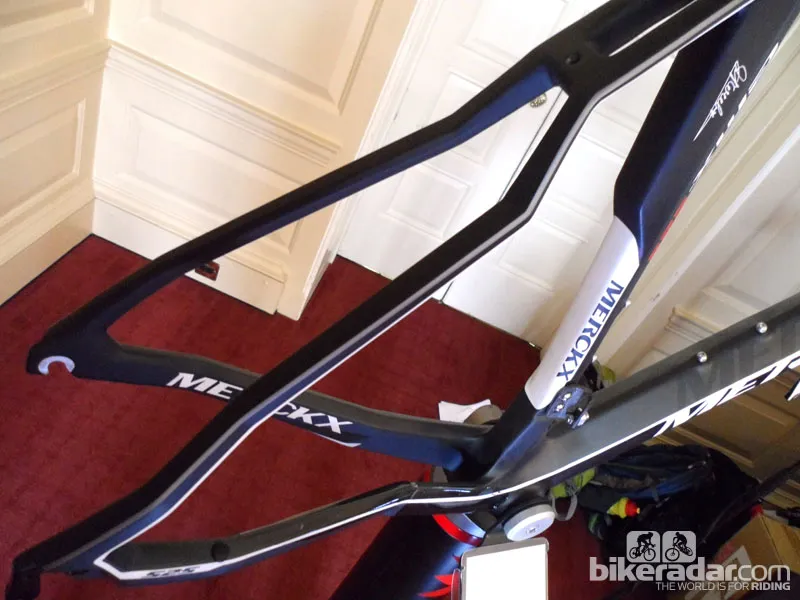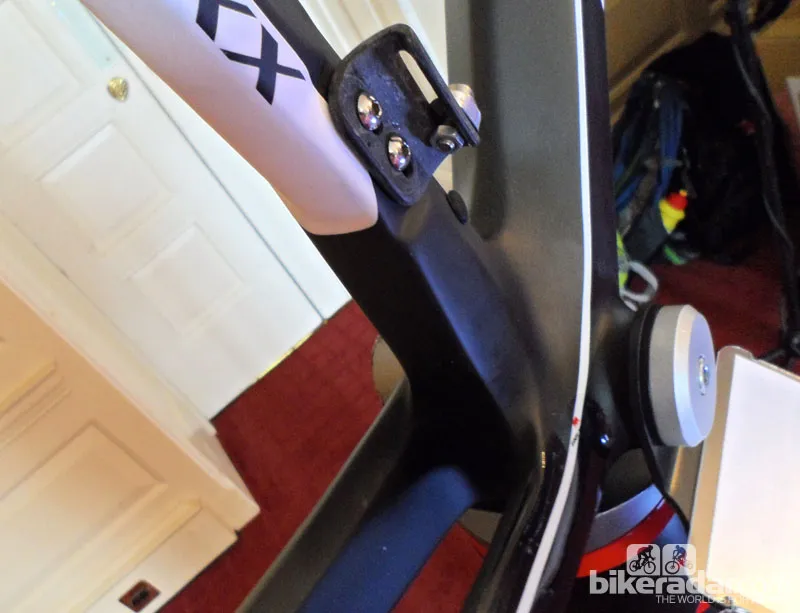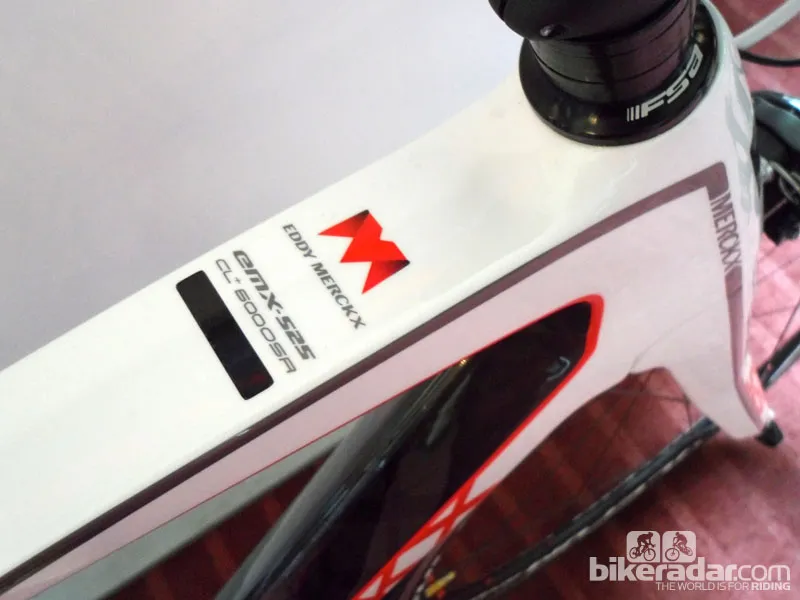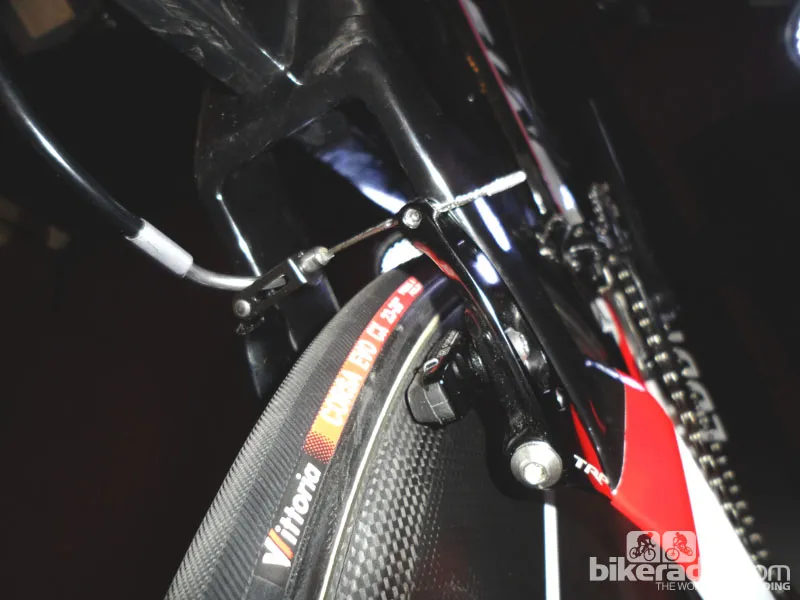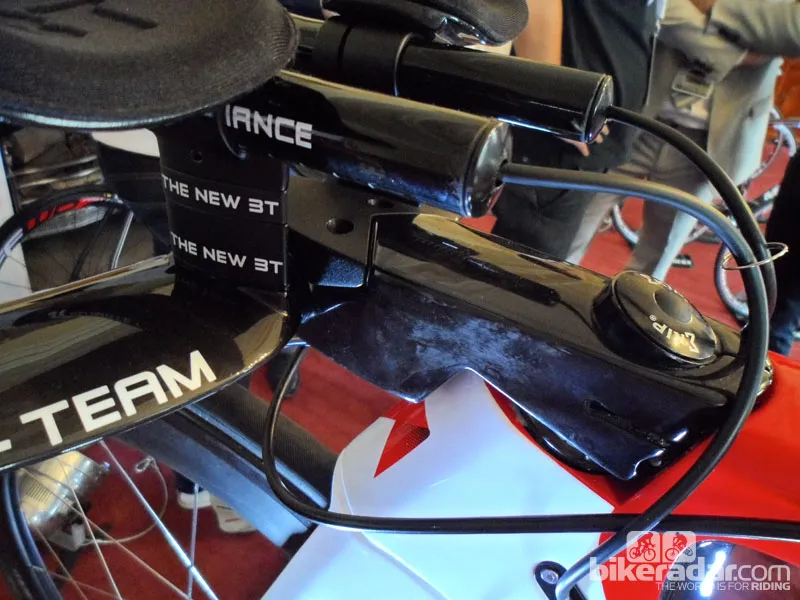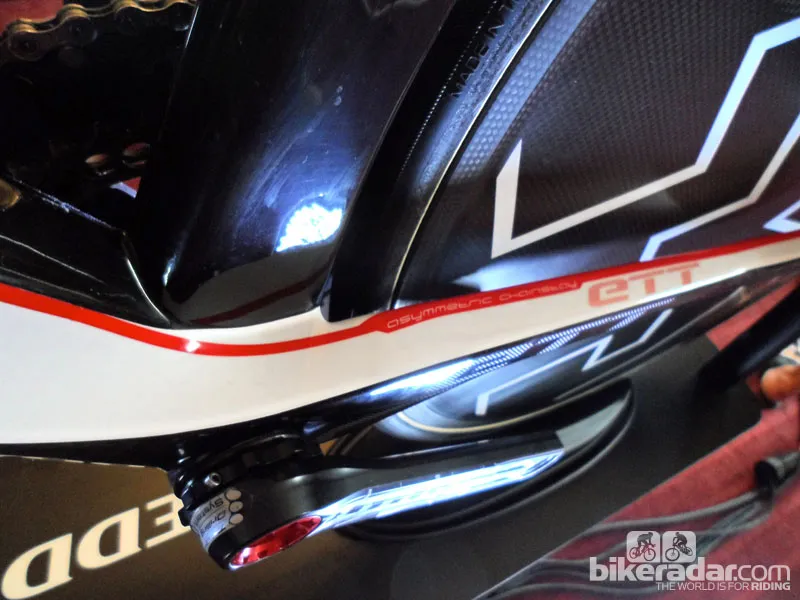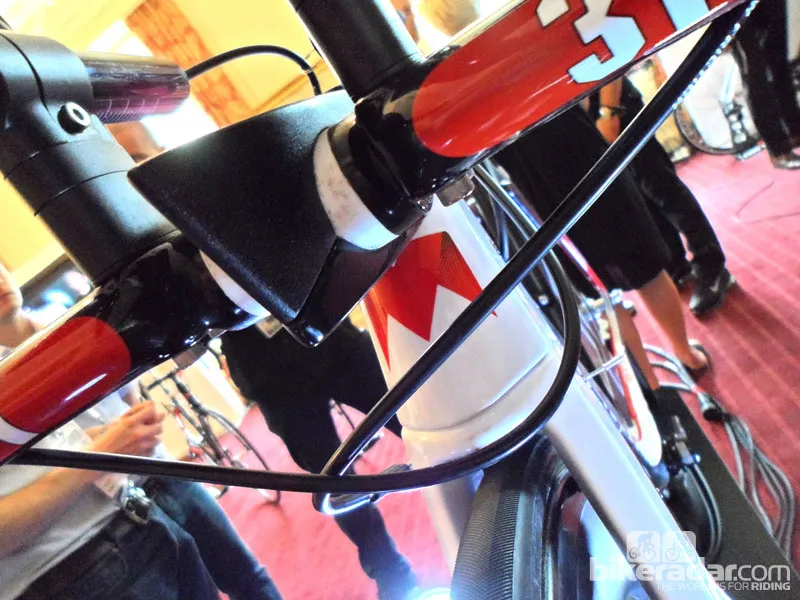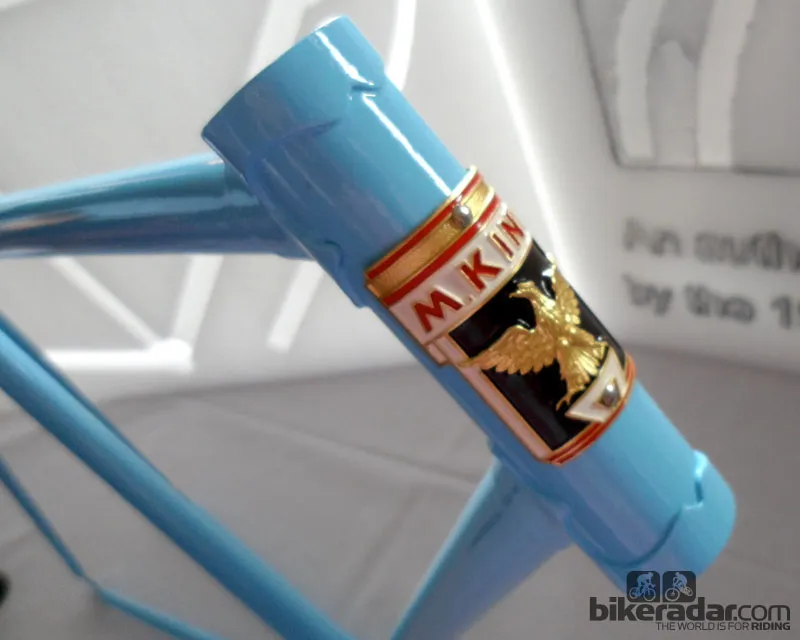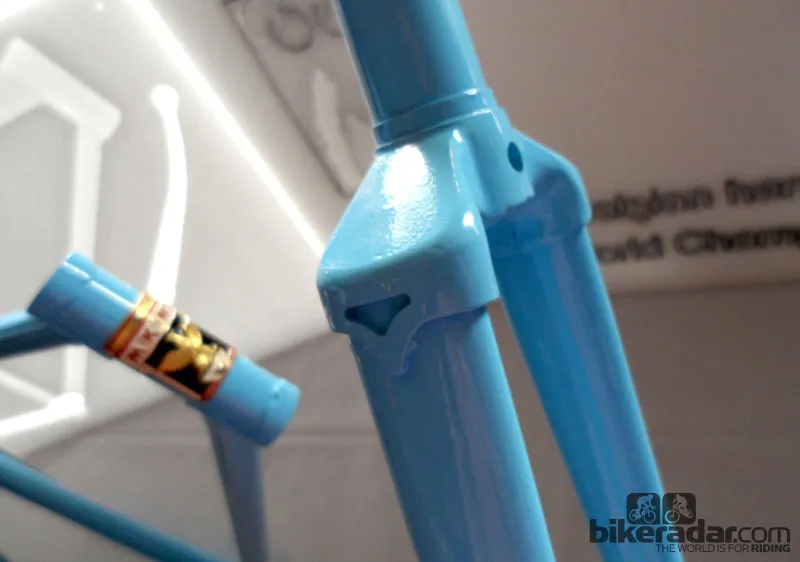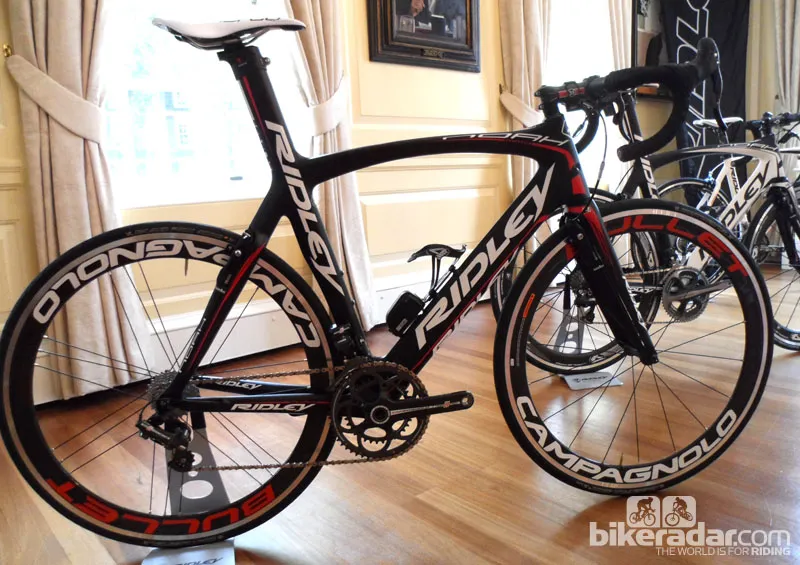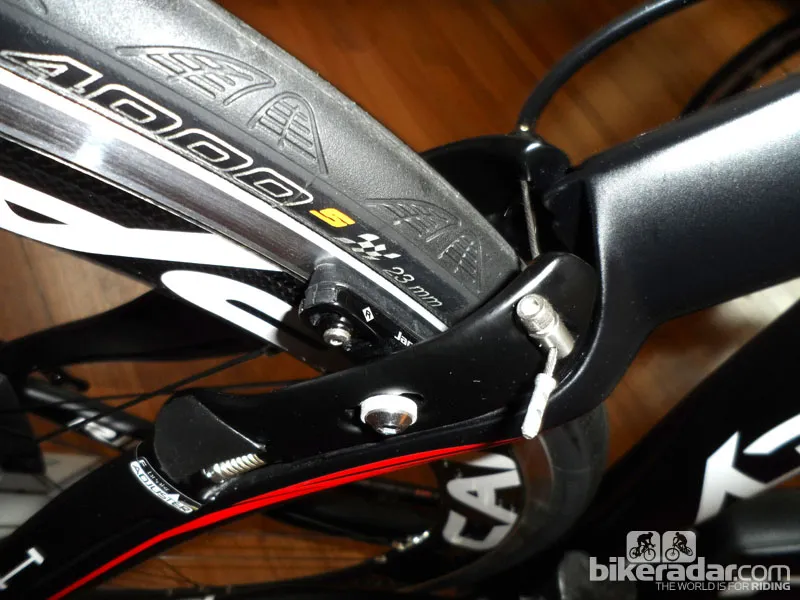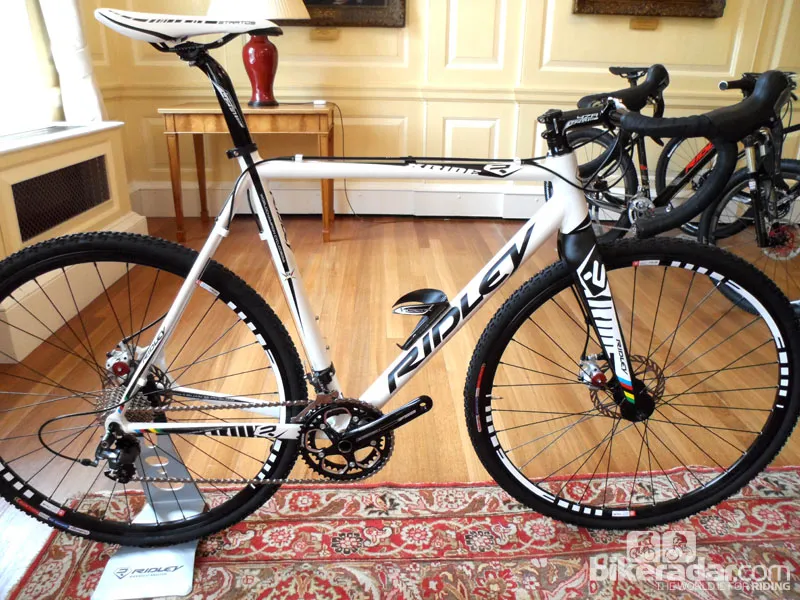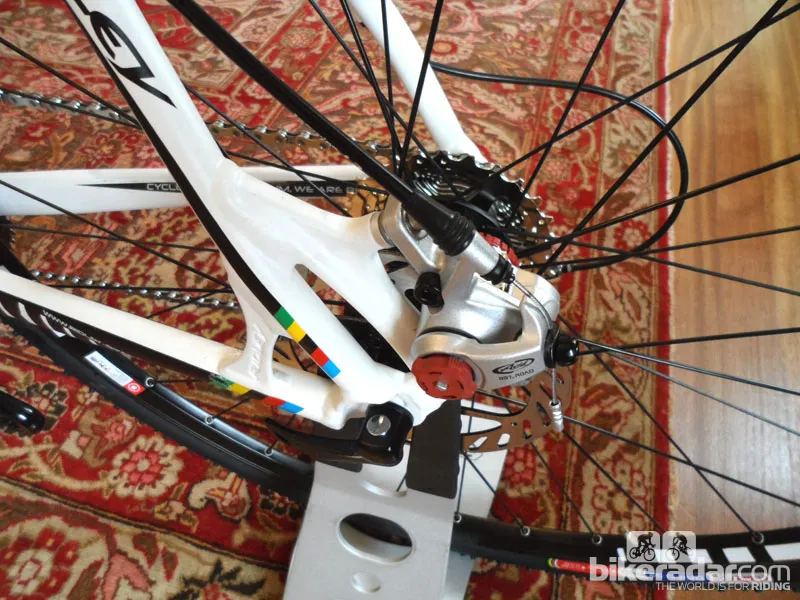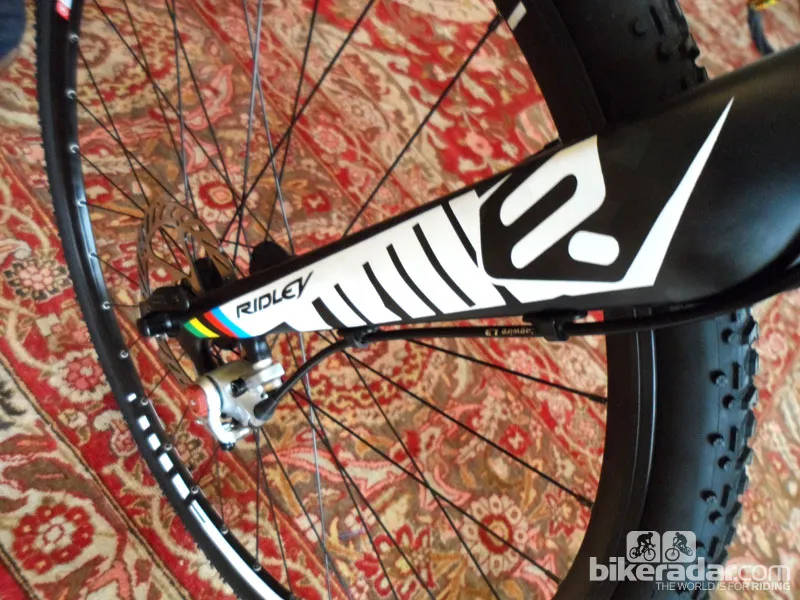On the eve of the 2012 Olympic Games, London’s Belgian House at Inner Temple played host to a selection of Belgian bike brands, along with the Belgian Olympic cycling team and the legendary Eddy Merckx. We went along to see what cycling’s heartland has to offer for 2013.
Merckx launches two new flagship models: 525 and ETT
If you're going to produce a bike that celebrates the career of one Mr Eddy Merckx by naming it the 525 (the number of his professional career wins) then it's got to be good. We spoke to Merckx R&D manager Dave Luyckx about the 525 and what makes it quite so special.
Back in June we caught first sight of the 525 in its final prototype stage at the gran fondo Francesco Moser, where Dave joined us on the event to give the 525 a final shakedown. In London he presented the final frameset and the build options.
Dave’s background in composites meant that his first task on joining the Merckx company was to produce two new range-topping models which had to represent the values that Merckx expects in a bike. "Eddy looks for quality and 'power under control'. We needed to strive for a bike that has the best performance - being the lightest is all well and good if you want to chase headlines but on the road we want a bike with unparalleled stiffness where you need it, and that’s getting power through the pedals and to the back wheel."
With a claimed weight of 1840g for the framekit (that’s frame, fork, headset and seatpost) the 525 is hardly a heavyweight. The frame itself is optimised for electronic gearing with no option for standard mechanical drivetrains. Merckx have no plans to offer a mechanical option at this time, but would look into it if sufficient demand arose. With regards to the stiffness claims, Dave has taken the 525 through a whole slew of comparative tests with the Merckx outperforming all of its rivals: "The critical measure we looked at is the relationship between the front and rear axles," he explained.
The 525’s angular construction sets it apart from the rest of the current crop of top end frames and its quite a departure from the current EMX-7 which it's set to usurp at the top of the Merckx tree. Up front the massive squared off head tube has a 1.5in lower stack, fast becoming the default on road bikes. This is mated to the new Aero II fork.
Dave described the reason for this massively chunky front end: "For steering precision and stiffness at the front, you need to add volume."
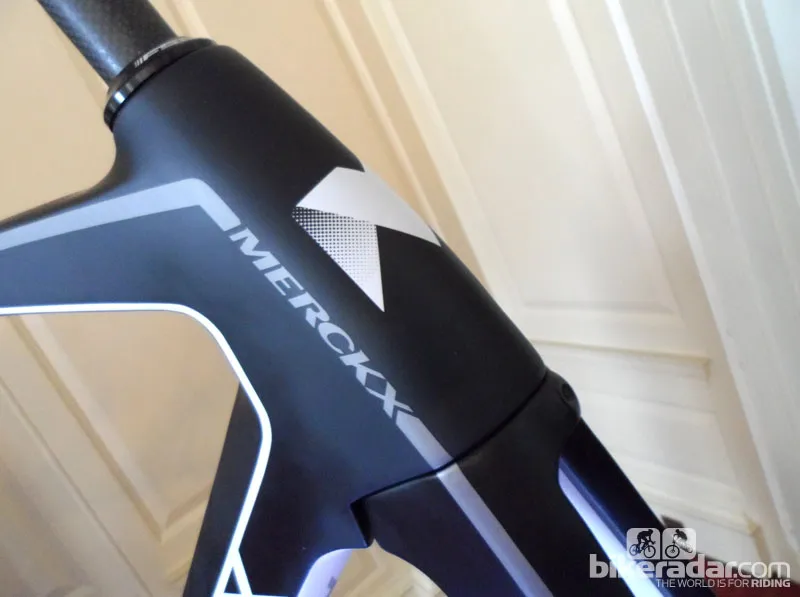
Pump up the volume: the front end of the Eddy Merckx 525
Under the skin of the sharp edged 525 is a cleverly devised construction. "With the downtube through the bottom bracket and into the chainstays we have used continuous fibres," said Luyckx. So that’s from the head tube to the dropouts using a mass of single carbon layers, the aim being to eliminate any joints at these crucial areas and provide a solid, highly rigid and very strong underpinning to the frame.
Out back the 525 mates both asymmetric seat and chainstays. Luyckx explained that a huge amount of research has gone into creating a rear end which balances the strength needed to maintain balance under high power pedalling with no losses in this critical area.
We had to ask about comfort. It's fast become a buzzword on the latest road machines, with the likes of Specialized, Trek, and BMC putting huge efforts into designing vibration reduction on top flight frames. Merckx explained that while they were currently investigating the benefit of comfort and researching the data from more comfort-focused bikes, they still believe that a more efficient frame means less fatigue, and with the advent of wider rims and bigger volume tyres, most people would gain all the comfort they need in those areas before you potentially make a frameset less efficient.
We are looking forward to getting on board the new 525 as it's an interesting premise. A bike optimised for racing without compromise sounds exciting, we just wonder if you’ll need to be as tough as the cannibal to get the best out of it. The 525 will be available as a frameset for £2899, or in Ultegra Di2 spec for £4499 from www.i-ride.co.uk
The ETT arrives
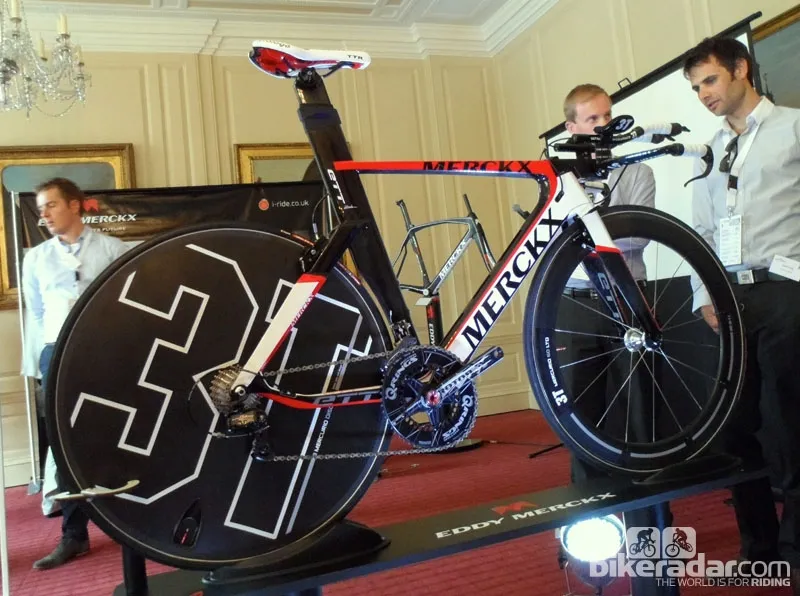
Enter the ETT
We reported on the new ETT - the Eddy Merckx time trial bike - a couple of months ago but this has been our first chance to see one up close. Designed in conjunction with Lexus, its certainly got plenty to set it apart from the high end TT crowd.
While the integrated fork/head tube/stem has become the norm in time trial bike design, Merckx has one significant point of difference up its sleeve. It’s called the ‘Venturi powerbox’ and its all about the unique downtube. Along the length of the downtube are three significantly sized slots cut through its centre horizontally. Merckx claim that as air passes from the front of the bike, the air channeled into these slots speeds up in direct proportion to the reduction in area, leading to reduced drag and increased stability too.
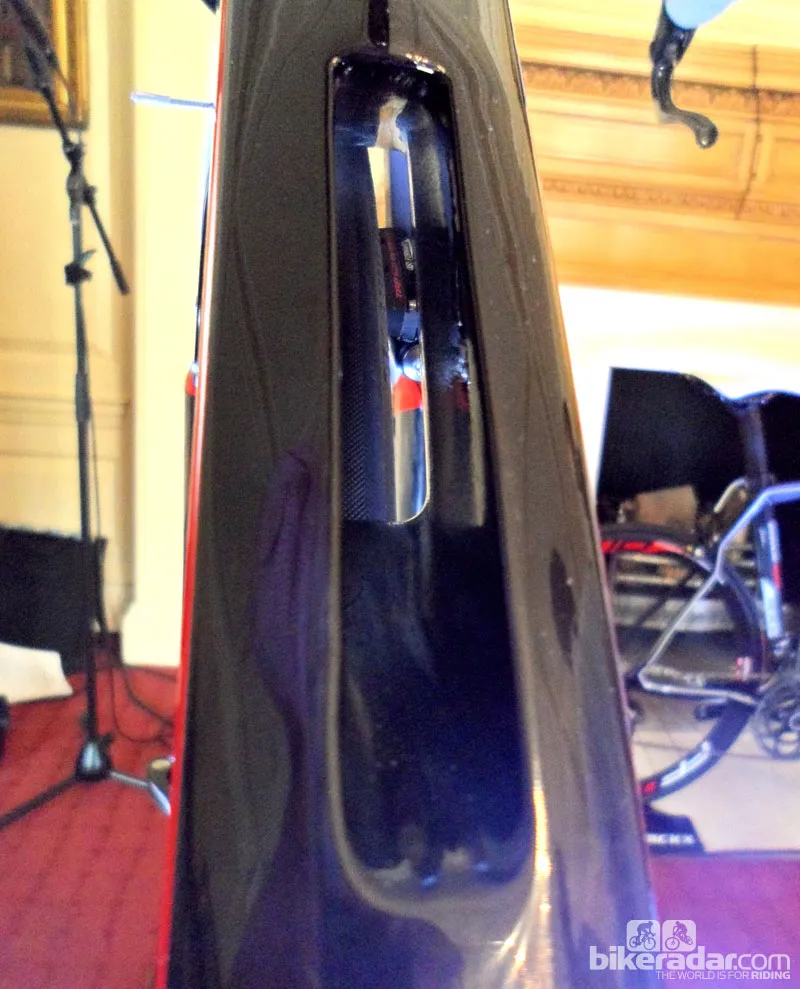
Here's where the magic happens, under the down tube
As Lexus have produced various supercars in the past and Le Mans class racers too, this design bears some similarity in its principles to the rear diffusers on high performance cars. As the bike has been in development for a number of years and has also been ratified for use in competition by the UCI, its surprising to see that no-one else has investigated this feature. That is until Merckx explained that the UCI approval came with one significant caveat: that it's fine and approved on this machine but they cannot use it again. So not only is the ETT a rarefied elite time trial machine, its set to become an evolutionary cul-de-sac and sure fire collector's item of the future, like the Mike Burrows designed Lotus bike that was used by Chris Boardman.
Elsewhere the frame uses a fairly standard braking system (TRP’s aero profile V-Style brakes). The front is rear mounted to keep it out of the way of the air but the rear is mounted in its traditional seat stay top position. Merckx explained it's there to aid quicker wheel changes in the heat of competition versus the more popular under the chainstay bridge of its competitors.
The ETT hasn’t had its pricing set quite yet, but the claimed frame kit weight of 2446g (56) which includes frame, fork, chainset, and headset looks competitive. www.i-ride.co.uk
Marcel Kint bikes

M.Kint Black Eagle
The M.Kint bicycle brand was founded by Marcel Kint back in 1914. Kint was world road champion in 1938 - a title he held until 1946 as the Second World War put a halt to his cycling career. And in a parallel with world champ Mark Cavendish in this year's Tour de France, he also won the final Tour stage in Paris in 1939.
The Kint brand has been in existence for nearly 100 years now and this new frame - a single speed/fixed wheel bike for the road - is based around Marcel’s own frame design from 1938. The bikes are still hand made in Kortrijk, Belgium and the company is now run by Marcel’s grandson. Built using either Columbus or Reynolds steel, the frame called the Black Eagle is available as a custom or standard sizing. www.fietsenkint.be
Ridley's new Fenix
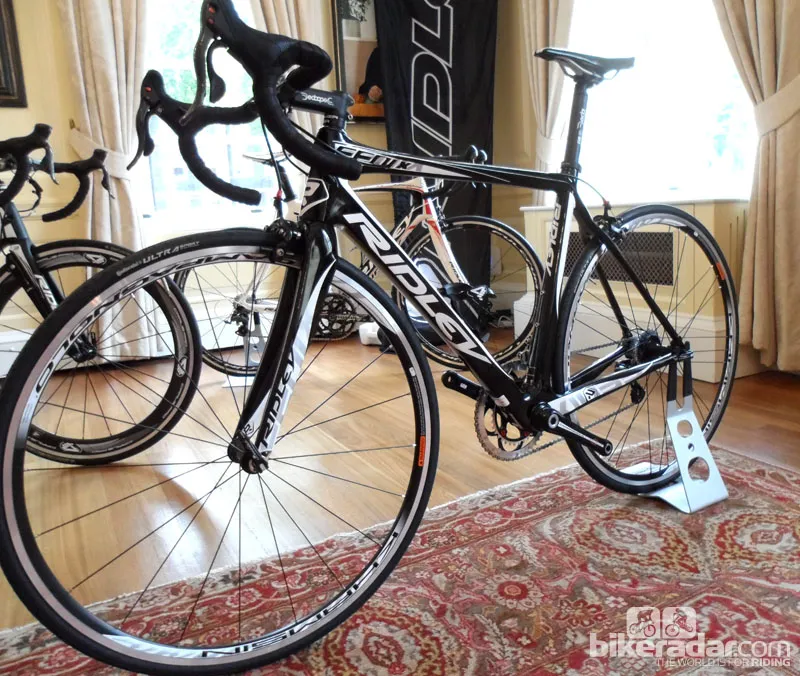
Ridley showed off a new addition to its range, the Fenix. The name is joined like the Noah (aero) and Helium (strength to weight) by just strength, so this one's built to be pushed hard. Available in three different guises with the £3020 Ultegra Di2 model topping the tree, there's also an £1825 Campagnolo Centaur version (pictured) and a £1190 Shimano 105 model. www.ridley-bikes.com
